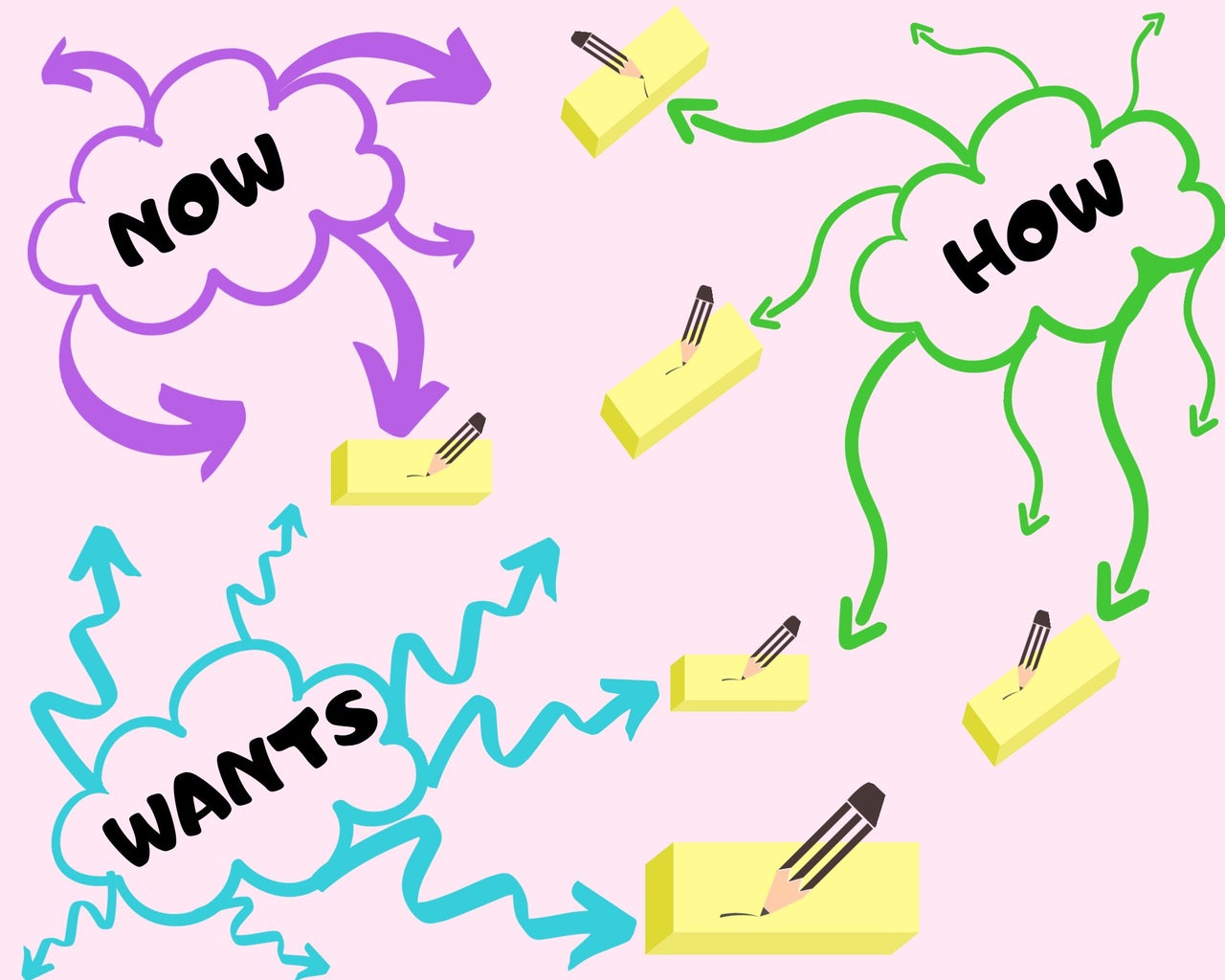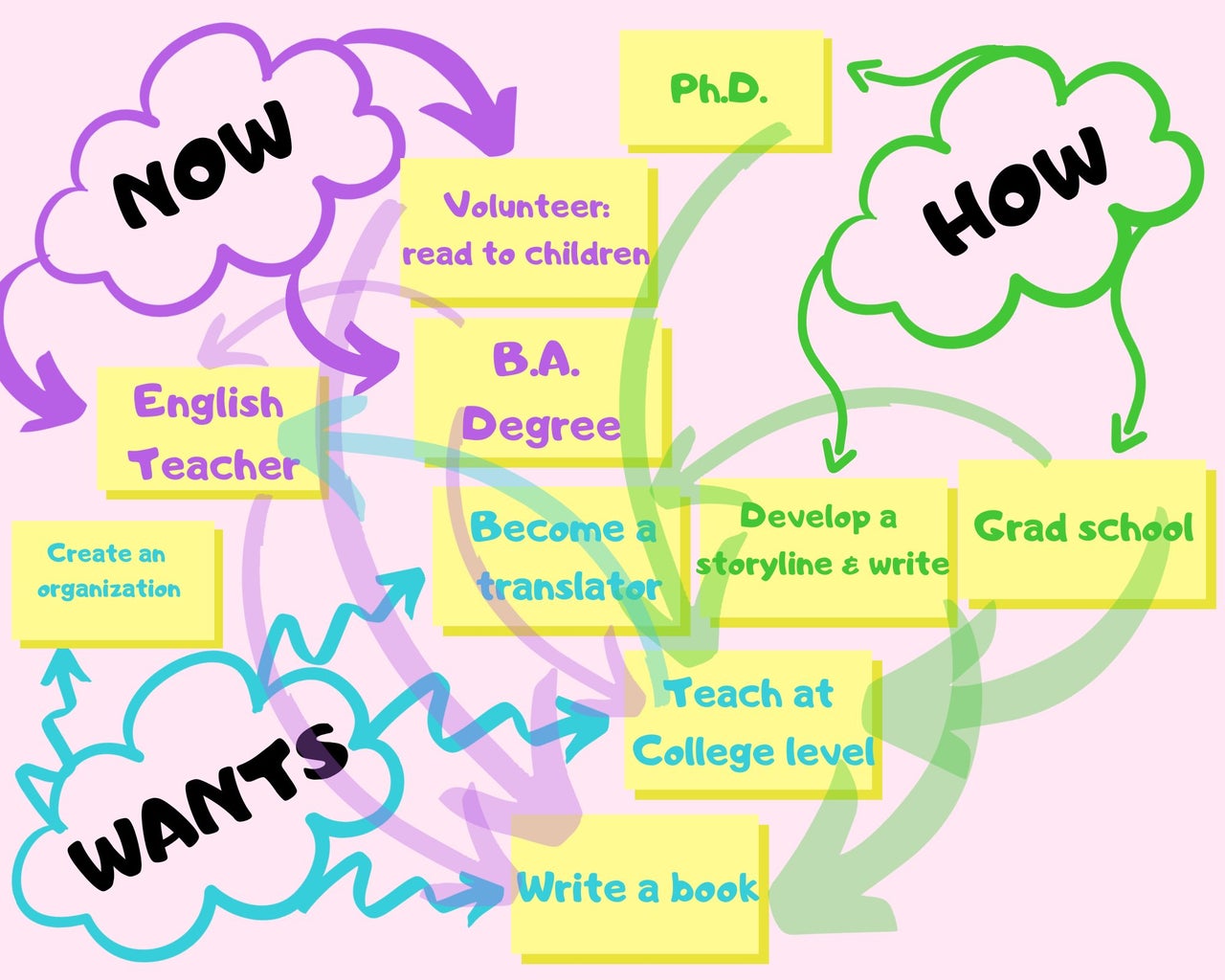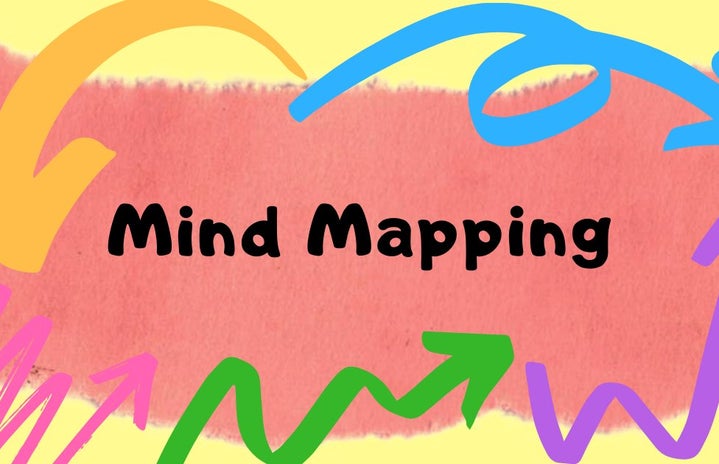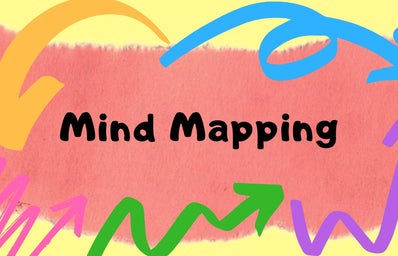I’m taking a course called Design Thinking in which we’re taught to think creatively about possible solutions to a problem. With this method, we focus on the people’s needs and not the product meant to solve the issue. When doing so, we’re provided different techniques such as brainstorming, mash-ups, and e-storming, where possibilities to come up with ideas are endless. Among them is also mind mapping. So, one of our assignments consisted of doing a mind map of our professional careers to test the waters and see how this tool would work later on for a business, a product or service, among others.
By doing this exercise I was able to clear up many confusions I had in relation to my academic and professional goals. More than an assignment, this ended up being a process of reflection and decision making.
Since it was so helpful to me, I thought it might also be helpful for others, especially students who are struggling with their lives, in addition to both their professional and academic plans.
Here’s how it works:
-
Find a large space where you can write, such as kraft paper or pasteboard. If you have a large blackboard, that can work as well.
-
Take three markers, pens, or color pencils, each of a different color. Let’s say: purple, blue, and green (do not use yellow as it can be difficult to read.)
-
Each color will represent the following:
Note: You can switch the word ‘professional’ to whatever aspect of your life you’re making this for (social relationships, personal growth, academic goals, a business, etc.)
-
Purple: Your current professional status (NOW).
-
Blue: What you want to do or accomplish professionally (WANTS).
-
Green: How you’re going to turn those wants into a reality (HOW).
*To make it easier, write separately the words NOW, WANTS, and HOW on the large paper you’d be using.

-
Shoot arrows from each of the words and respond to your NOW, your WANTS, and your HOW. You can even use drawings, emojis, or icons instead of words, as long as you understand them. If you’re using words, keep them short and straight to the point. That means no sentences.
-
When you finish, make connections with each of the things you wrote.
This exercise works as an active investigation and visual board meant for you to see which things align or are aligning together and which ones aren’t; how many similarities you find amongst what you want and what you’re doing now, and it helps you look within yourself for the steps you need to take to move forward. In other words, it gives you clarity on where you are now, what you want, and helps you create a starting point to develop a concrete plan to reach your goals.

When I did this exercise, I needed to put aside any embarrassment, pressure, and expectations I may be carrying on my shoulders to lay out what I want and where I am at in life. I get what it’s like not to be where you thought you would be at a certain moment in one’s life. That’s why this exercise came at a very good time. It gave me some clarity, and it really helped me make sense of the web of thoughts I’ve been having in my head. For that, I highly recommend mind mapping, especially when you want to do many different things, but still have no clue what to do, if that makes sense.
Be patient with yourself, for each of us is writing our own story and proofreading as we go along. The book of our lives has not been finished. It’s just starting and we have endless pages to document our journey before we get to where we want to be and who we want to become. Even then, a new chapter awaits. Good luck on your journey!


